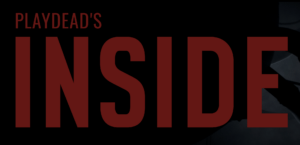– PROMPT –
Choose one of the 4 games to play then write a response blog for it. Anything could be included in this response.
- Option 1: Celeste
- Option 2: Hollow Knight
- Option 3: INSIDE
- Option 4: Limbo
– RESPONSE –
For this assignment, I played Playdead’s INSIDE, a 2d platformer combining actions and puzzles. When we observed our classmates trying this game in the first class, I was intrigued by its overall visuals and puzzle designs, therefore choosing it from the above four games to personally experience it.
Generally speaking, what fascinated me most was the challenge design of this game. I understood that it would be a running game with some challenging settings at the first glance. However, as I kept playing, the design and imagination of the challenges continuously surprised me not only as a player but also from the perspective of a game designer. Managing to control unconscious people was the first surprise after I got familiar with identifying triggers to change object angles or positions. Looking back, such breakthrough also indicates to reveal the great narrative besides the action required at the beginning. Similarly, when the boy, the main character controlled by players, was required to mimic the actions of those unconscious people, I was again amazed by such challenge design, as it broadens my understanding of user interaction with NPCs and background settings in puzzle games. While sometimes being out of expectation, the challenge designs in this game consistently adhere to our intuition, which makes each challenge successfully hit the balance of encouraging exploration and being logical.
Besides the gameplay, the narrative was also a highlight of this game. The overall setting of this game was gradually unveiled as we players explored forward through controlling the boy, yet what makes it absurd was that the narrative targeted a world-view of losing consciousness and getting rid of being controlled. As I didn’t fully complete this game, I watched several playthrough videos to figure out the ending. The normal ending points to the cruel fact that all struggles to escape from the laboratory were in the end useless, while the hidden one provides an opportunity to shut down the power of control, leading to the simultaneous death of the boy. The latter one, from my understanding, was even crueler because the boy’s death actually proves the fact of being controlled, which denied our ever-lasting assumption of being selected among all to strive for hope — even though we could control those unconscious during the process, we ourselves are still being controlled. Such ending indeed caused an emotional shock to me, and I was again amazed by the designer conveying such heavy messages through seemingly simple keyboard controls like WASD and independent control key.
Other than above, appropriate sound effects (like the groaning of the giant meatball in the end), attracting visuals (represented by the sharp contrast between light and shadows) and vivid visual effects (like the reflection on the water surface) all contribute to the success of the gameplay and narrative, therefore leading to great success. I was extremely inspired to think of future game design, more importantly, to re-consider the meaning of consciousness and the relationship between game players and the controlled game characters.

Leave a Reply